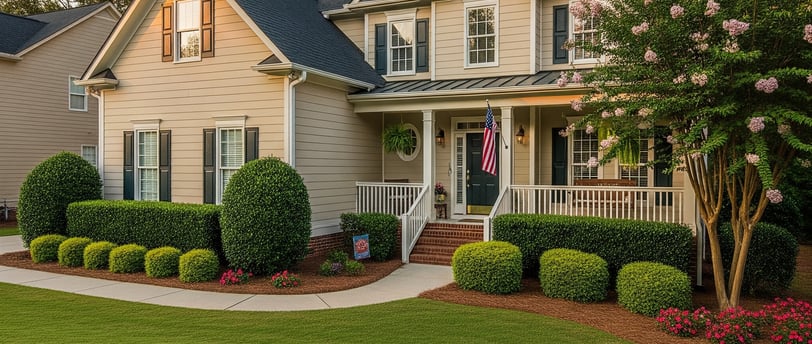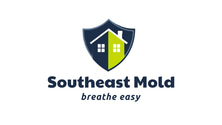Is Mold Taking Over Your Southeast Home? What You Need to Know
The humid climate of the Southeast United States – from the bustling cities of Georgia to the coastal towns of Florida and the charming communities of the Carolinas – makes it a beautiful place to live. However, this warmth and moisture create a perfect breeding ground for an unwelcome guest: mold.
Southeast Mold
5/15/2025


Is Mold Taking Over Your Southeast Home? What You Need to Know (and How Southeast Mold Can Help!)
The humid climate of the Southeast United States – from the bustling cities of Georgia to the coastal towns of Florida and the charming communities of the Carolinas – makes it a beautiful place to live. However, this warmth and moisture create a perfect breeding ground for an unwelcome guest: mold.
If you're a homeowner in the Southeast, chances are you've either dealt with mold or are constantly vigilant against it. Questions like "Why is there mold in my bathroom?", "What does black mold look like?", and "How do I get rid of mold in my basement?" are common searches. At Southeast Mold, we understand your concerns, and we're here to provide expert solutions and peace of mind.
Why the Southeast is a Mold Magnet
The high humidity, frequent rainfall, and warm temperatures across the Southeast create an ideal environment for mold spores to thrive. Mold only needs three things to grow: moisture, a food source (like drywall, wood, or fabric), and a comfortable temperature. Unfortunately, our homes often provide all three in abundance.
Common culprits for mold growth in our region include:
High Indoor Humidity: Especially during summer months, indoor humidity can easily creep above the 50% threshold that mold loves.
Leaky Roofs and Plumbing: Even small, hidden leaks can create consistently damp spots.
Poor Ventilation: Bathrooms, kitchens, and basements without proper air circulation trap moisture.
Flooding and Water Damage: Whether from heavy rains, hurricanes, or burst pipes, water intrusion can lead to rapid mold growth if not dried thoroughly within 24-48 hours.
Damp Crawl Spaces and Basements: These areas are notorious for moisture buildup.
Common Mold Questions & Health Concerns in the Southeast
Many homeowners search for information about mold's appearance and its potential impact on health.
What does mold look like? Mold can appear in various colors – black, green, white, gray, or even orange. It often has a fuzzy, cottony, or slimy texture and may resemble stains or discolored patches.
What does mold smell like? A strong, musty, earthy odor is a tell-tale sign of mold, even if you can't see it.
Is black mold dangerous? While all indoor mold should be removed promptly, "black mold" (Stachybotrys chartarum) is a common concern due to its potential to produce mycotoxins. Exposure to any mold, regardless of type, can cause health issues.
What are the health effects of mold exposure? For many, mold exposure leads to allergic reactions like sneezing, runny nose, itchy eyes, skin rashes, and wheezing. For individuals with asthma, allergies, or weakened immune systems, symptoms can be more severe, including difficulty breathing, chronic respiratory issues, and even infections.
Your Best Defense: Prevention and Professional Remediation
Preventing mold in our humid climate requires a proactive approach:
Control Humidity: Aim to keep indoor humidity between 30% and 50%. Use dehumidifiers in damp areas (like basements and crawl spaces), run your AC during humid months, and ensure your HVAC system is properly maintained.
Ensure Proper Ventilation: Use exhaust fans in bathrooms and kitchens. Open windows when weather permits to encourage airflow. Consider improving attic and crawl space ventilation.
Fix Leaks Immediately: Don't delay! Even minor leaks can lead to significant mold growth. Inspect pipes, roofs, and foundations regularly.
Dry Wet Areas Promptly: After any water event or spill, dry affected areas completely within 24-48 hours. This is crucial to prevent mold from taking hold.
Clean Regularly: A clean home helps prevent mold spores from settling and growing.
When to Call the Professionals at Southeast Mold
While small patches of surface mold might be tackled by a homeowner, extensive mold growth, hidden mold, or mold resulting from significant water damage requires professional expertise. Trying to remove large mold infestations yourself can spread spores, worsen the problem, and expose you to health risks.
At Southeast Mold, we are your local certified mold remediation experts for Georgia, Florida, and the entire Southeast region. We specialize in:
Comprehensive Mold Inspection & Testing: Identifying the source and extent of mold growth, even in hidden areas.
Safe & Effective Mold Removal: Using industry-leading techniques and equipment to safely eliminate mold from your home.
Water Damage Restoration: Addressing the underlying moisture issues to prevent future mold problems.
Air Quality Improvement: Ensuring your indoor air is clean and healthy after remediation.
Don't let mold compromise your home or your health. If you suspect a mold problem, especially in your basement, attic, crawl space, or around your HVAC system, contact Southeast Mold today for a thorough assessment and effective mold removal services. We're here to help you breathe easier and enjoy a mold-free home in the beautiful Southeast!
Call us today: 770-744-3383 or email us at info@southeastmold.com
